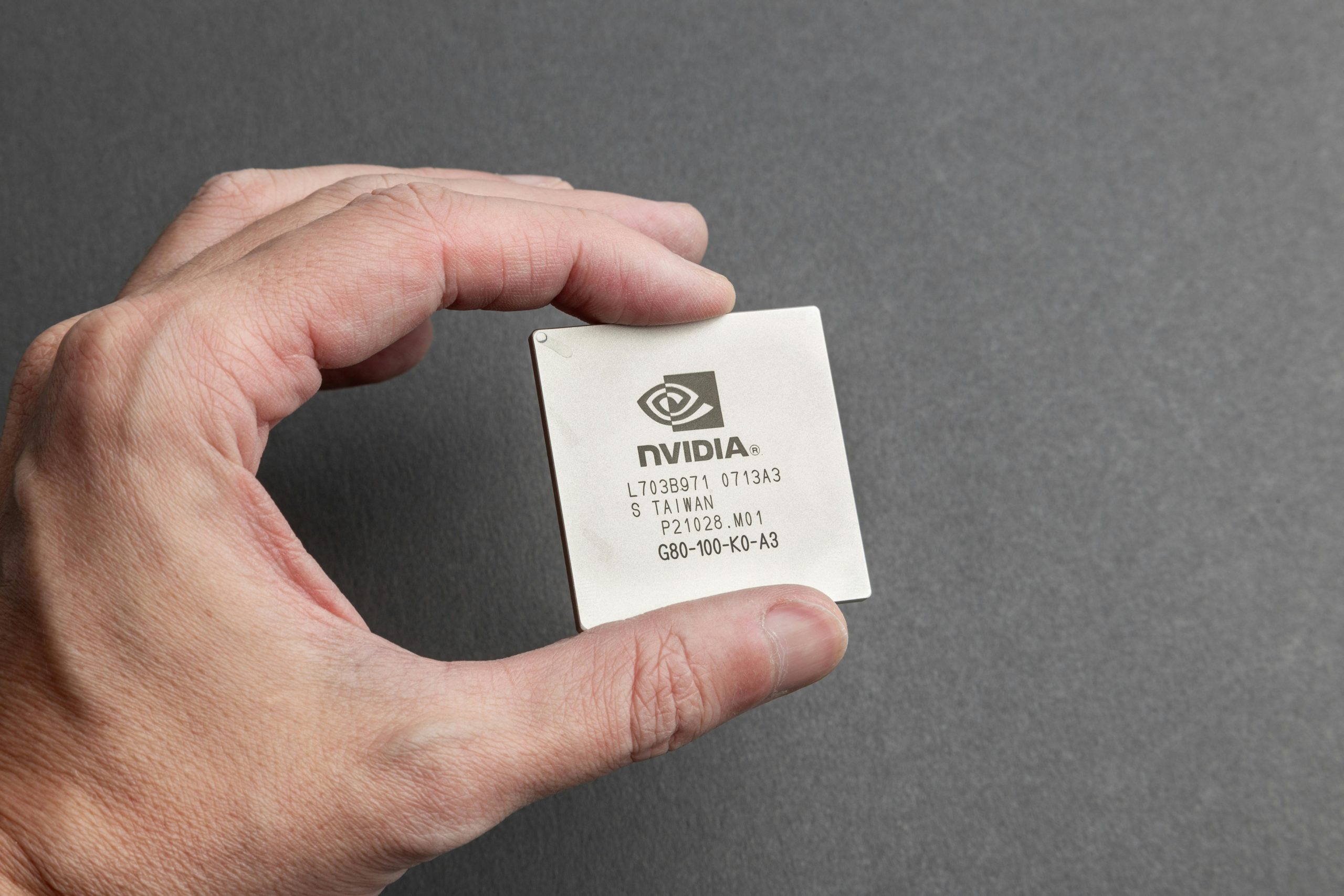EXCLUSIVE: Amazon’s Free DSP Face-Off – Analysis of Financial Undercurrents and Market Dynamics

The digital advertising ecosystem has been jolted by a revelation, initially exposed via leaked internal documentation and reported by Adweek in October 2025, detailing an aggressive new strategy from Amazon: an all-expenses-paid, direct comparison program targeting media buyers, dubbed the “Free DSP Face-Off.” This maneuver, where the e-commerce titan essentially subsidizes the cost of testing its Demand-Side Platform (DSP) against that of its rivals, represents a capital-intensive escalation in the perennial battle for programmatic supremacy. The immediate market reaction, evidenced by a dip in the stock of leading independent platform, The Trade Desk (TTD), on October 24, 2025, underscores the perceived threat this tactic poses to the established order.
To fully grasp the gravity of this “Face-Off” initiative, one must analyze the robust financial foundation fueling this market aggression, the concurrent evolution of Amazon’s technology suite, and the broader implications for industry competition and regulatory oversight as of late 2025.
Analysis of the Financial Undercurrents and Market Dynamics
Robust Revenue Growth Fueling Strategic Aggression
The backdrop to this high-stakes market challenge is a period of exceptional financial performance specifically within Amazon’s advertising division. The robust, high-percentage growth demonstrated in recent earnings reports provides the necessary financial impetus and confidence for Amazon to deploy such a costly competitive tactic across numerous agencies.
As of the second quarter of 2025 (Q2 2025), Amazon’s advertising services revenue reached a significant milestone, totaling \$15.69 billion. This figure represented a substantial year-over-year (YoY) increase of 23% compared to Q2 2024’s \$12.77 billion. This growth rate substantially outpaced the broader enterprise’s overall revenue expansion of approximately 13% for the same period. The momentum continued from the first quarter of 2025 (Q1 2025), where advertising revenue stood at \$13.9 billion, marking a 19% YoY increase.
This sustained, high-percentage growth indicates that the existing advertising products were already performing exceptionally well, providing the necessary financial impetus and confidence for the company to initiate such a high-cost, high-stakes challenge to rivals. The sheer scale of the revenue generated—a figure nearing \$16 billion for a single quarter—ensures that the advertising division possesses the capital reserves required to strategically underwrite the costs of these comparative testing programs across numerous agencies for an extended period, treating it as a necessary marketing investment for long-term platform capture. This financial stability effectively removes the concept of budgetary constraint from their competitive playbook, forcing rivals to compete on service and technology alone, without the ability to match such an investment in direct customer acquisition cost.
Aggressive Pricing Tactics and Take Rate Compression
Beyond the subsidized testing, the broader pricing landscape for the Amazon DSP was already signaling a deliberate strategy to undercut established industry norms. While the exact take rates for independent DSPs—the percentage of the ad dollar retained by the platform operator—remain proprietary, the context of the competitive landscape suggests immense pressure.
Industry reports for 2025 generally place the estimated average Cost Per Thousand (CPM) for Amazon DSP campaigns in the \$8–\$15 range, operating on a Cost Per Impression (CPM) model rather than the Cost Per Click (CPC) model common in other Amazon ad formats [cite: 1 from context 3, 2 from context 3]. Standard industry fees for independent DSP usage are often cited in the mid-single-digit percentage range of total media spend. Amazon’s strategy, exemplified by underwriting competitor measurement and inventory costs during the “Face-Off,” signals a confidence that its effective internal take rate, when measured purely on technology access rather than premium, data-laden inventory, can be driven toward the floor.
This strategy of pushing implied take rates toward the floor serves two critical functions: first, it provides immediate, tangible cost savings to large spenders who might otherwise be paying traditional platform fees; second, it places immense margin pressure on independent DSPs whose core profitability is built upon those very take rates. The overall message to the market is one of inescapable value, where the combination of expansive reach (access to Amazon’s retail audience), superior measurement (closed-loop attribution), and market-leading subsidized pricing creates a tripartite value proposition that is extremely difficult for competitors to counter across all three dimensions simultaneously.
The Evolving Technology Suite: Beyond the Core DSP Functionality
Amazon’s market aggression is not solely based on financial leverage; it is deeply intertwined with a rapid technological expansion designed to future-proof the platform and deepen advertiser dependency.
Integrating Privacy-First Measurement Solutions
The challenge to the programmatic ecosystem is not just about winning bids; it is about adapting to the evolving regulatory and technological landscape, particularly concerning user privacy and data deprecation. Even as it aggressively seeks market share, the DSP was simultaneously enhancing its foundational measurement capabilities through strategic technical integrations designed to address the impending demise of traditional tracking methods.
In a significant development reported in March 2025, the Amazon DSP integrated reporting through the Google Privacy Sandbox into its suite of durable measurement solutions [cite: 2, 4 from context 2]. This integration was framed as crucial for maintaining campaign visibility and accurate conversion attribution for users operating within privacy-hardened browser environments, such as Chrome users who have opted out of older tracking paradigms [cite: 2 from context 2]. By proactively embedding these privacy-centric measurement solutions, Amazon positions its DSP as inherently future-proofed, ensuring advertisers retain visibility and accountability even as the open web’s tracking mechanisms fundamentally change. This proactive stance on compliance and measurement longevity builds a layer of essential security into their value proposition [cite: 2 from context 2].
It is important to note, however, that while the DSP integrated Sandbox *reporting*, subsequent reports in May 2025 indicated that Amazon canceled work on a specific software API that would have integrated the Amazon DSP with Google’s Protected Audience API (PAAPI), following Google’s decision to maintain its option for users regarding third-party cookies [cite: 5 from context 2]. This indicates a dynamic, reactive approach to the cookie-less future, leveraging the Sandbox where beneficial while retaining control over proprietary data pathways.
Expansion into New Ad Surfaces: The Alexa Frontier
Another significant vector of technological expansion involved leveraging Amazon’s vast consumer hardware footprint to open entirely new advertising real estate. This included the formal launch of the Alexa+ Home screen Ad program in the US, UK, and Germany, utilizing new Echo Show devices as a novel advertising surface [cite: 10, 13 from context 2].
This initiative was described as a means to reach an audience segment potentially underserved by traditional desktop or mobile display networks, capturing attention in a new, highly personal, in-home environment, especially when users are not actively engaging with the assistant [cite: 10, 13 from context 2]. The ability to utilize existing Asset-Based Creative (ABC) formats—the same ones familiar to desktop and mobile advertisers via the DSP—and deploy them seamlessly onto this new hardware surface dramatically lowered the barrier to entry for existing DSP users [cite: 1 from context 2]. This move is less about optimizing existing spend and more about fundamentally expanding the total available reach by monetizing the installed base of smart home devices, thereby deepening the stickiness of the entire Amazon Ads suite for users already invested in their technology stack. This push aligns with CEO Andy Jassy’s view that advertising is a vital revenue driver for the hardware division [cite: 10 from context 2].
Automation and AI-Driven Creative Optimization
The technological evolution also incorporated advanced automation to improve advertiser efficiency and creative resonance across Amazon’s core retail media properties, features that the DSP users implicitly benefit from through an increasingly sophisticated ecosystem.
A key development cited in industry updates from March 2025 was the introduction of dynamic headline customization within Sponsored Brands formats, a feature called “Optimize Your Headline” [cite: 1, 3 from context 2]. This feature utilized machine learning and artificial intelligence capabilities to automatically generate and iterate upon ad headlines in real-time. The system was designed to dynamically align the ad copy with the customer’s immediate search intent and evolving behavioral signals [cite: 1, 3 from context 2]. By allowing the platform’s algorithms to enhance and test headline variations at scale, advertisers could theoretically achieve a much tighter alignment between their messaging and the consumer’s moment-to-moment needs, driving higher engagement and conversion rates without requiring intensive manual creative management by the agency team [cite: 3 from context 2]. This commitment to embedding AI deep within the activation layer further positions the DSP as a technologically sophisticated partner, not merely a transactional conduit, competing with rivals like The Trade Desk’s own AI tools, such as the Kokai upgrade [cite: 7 from context 2, 9 from context 3].
Industry Scrutiny and Broader Sector Implications
Analyzing the Threat to Independent Demand-Side Platforms
The news of the “Free DSP Face-Off” places an existential spotlight on the independent DSP sector. The immediate stock market reaction against The Trade Desk (TTD), one of the largest non-walled-garden providers, serves as the clearest quantifiable evidence of this threat [cite: 3, 6, 7 from context 1].
Independent platforms derive their value from offering neutrality, greater inventory diversity outside of a single media giant’s properties, and specialized tools for complex, multi-channel programmatic buying. The aggressive, subsidized testing by Amazon directly challenges the fundamental value proposition of neutrality and forces a re-evaluation of what justifies the platform fee in the eyes of the media buyer. If a dominant, data-rich player offers to remove the cost of comparison and potentially demonstrate superior bottom-funnel performance using its proprietary shopping data, the justification for maintaining a separate, fully-fee-paying independent DSP becomes much harder to articulate internally at an agency, especially if that agency also manages a significant retail media component on Amazon properties [cite: 9 from context 2]. The pressure is forcing a difficult conversation about market consolidation versus maintaining diverse, non-conflicted buying technology access. The Trade Desk’s year-to-date stock decline of 57% as of October 2025 is partly attributed to this increased competition from Amazon’s expanded DSP features [cite: 9 from context 3].
The Role of Amazon in the Upfront and Annual Planning Cycles
The timing and nature of this aggressive push coincided with the industry’s critical annual upfront negotiation and planning cycles. By proactively offering such a comprehensive, risk-free testing environment, Amazon aims to capture significant budget allocations before media plans are finalized and locked in for the coming year.
This strategic timing is designed to force an early evaluation of the platform’s capabilities against incumbents, potentially stealing budget that might have otherwise been earmarked for traditional linear television or other independent programmatic channels. The move suggests a confidence that the demonstrable results within a controlled test period will be persuasive enough to warrant a structural shift in spending philosophy, moving budget allocation decisions away from historical precedent and toward empirically proven, data-backed retail-integrated performance. This fundamentally alters the competitive dynamics of the high-stakes upfront market where large commitments are made months in advance. The goal is to lock in spend before agencies can fully commit to independent, less attribution-rich platforms.
Regulatory Environment and Long-Term Viability Assessment
Navigating the Intensifying Regulatory Oversight
While the immediate focus is on competitive dynamics, the overarching context of the current year includes a significantly heightened level of regulatory scrutiny targeting Big Tech platforms globally. This environment, marked by new digital services legislation and ongoing antitrust investigations, places any move toward aggressive market consolidation under an inherent cloud of caution.
The Federal Trade Commission (FTC) has an active case against Amazon, with a trial scheduled for June 2025, focusing on alleged anticompetitive practices related to most-favored-nation (MFN) pricing arrangements and the leveraging of its flagship Prime program [cite: 25 from context 2]. Any initiative that appears designed to systematically eliminate competitors through subsidized practices—like the Face-Off—or by leveraging inherent platform advantages (such as exclusive access to first-party data for competitive benchmarking) is likely to attract the attention of competition authorities. However, in hearings leading up to the trial, the FTC struggled to provide concrete economic evidence of consumer harm, such as higher prices, which could weaken its case regarding market abuse [cite: 23 from context 2]. Therefore, while the market sees a short-term advantage, the long-term sustainability of such an aggressive, cost-absorbing strategy could be contingent on navigating potential legal challenges aimed at curbing anti-competitive behaviors or ensuring fair market access for smaller, non-integrated technology providers.
Evaluating Long-Term Advertiser Dependency and Lock-In
From the perspective of an agency or a brand, adopting the Amazon DSP, especially under such financially favorable testing conditions, carries the long-term implication of increasing dependency on a single, incredibly powerful entity. While immediate benefits like superior retail attribution are clear—leveraging trillions of proprietary browsing, shopping, and streaming signals—deeper integration means building more of the tech stack, training more staff, and routing more data through one ecosystem [cite: 8 from context 2].
This creates significant switching costs down the road. The strategic question for brand leadership is whether the undeniable advantages in retail measurement are worth the structural consolidation of their ad tech infrastructure away from independent, multi-platform providers. The success of this “Face-Off” campaign will be measured not just in the short-term performance lift of the test campaigns, but in the subsequent, sustained percentage of annual media spend that remains anchored within the ecosystem following the trial conclusion. The platform’s proven ability to deliver results, as seen in a typical retail ROAS range of 3.5x to 5x for 2025, makes walking away increasingly difficult once the deep integration is established [cite: 20 from context 2].
Conclusion: A New Benchmark for Programmatic Competition
The Legacy of the Face-Off Initiative
The “Free DSP Face-Off” story, as initially exposed through leaked internal documents, transcends a mere news headline; it represents a calculated, capital-intensive escalation in the technology sector’s advertising wars. It established a new, perhaps unsustainable, benchmark for how a market giant is willing to financially incentivize the displacement of incumbent technology providers.
The entire development, from the structured dual-campaigns to the absorption of competitive costs, clearly articulated a strategy aimed at achieving total control over the advertising measurement and execution layer, especially where it intersects with commerce. The coverage it generated across the industry confirmed its status as a leading indicator of where the battle for programmatic supremacy is heading: toward verifiable, closed-loop measurement fueled by proprietary data, and away from fragmented, multi-vendor solutions [cite: 8 from context 1]. This moment will likely be cited as the inflection point where programmatic spend began its decisive, and perhaps irreversible, shift toward the retail media networks that can offer direct transactional certainty as their primary metric of success. This entire evolving narrative in the Amazon sector is indeed worth continuous, close observation for its profound and lasting implications across the entire digital media economy.










